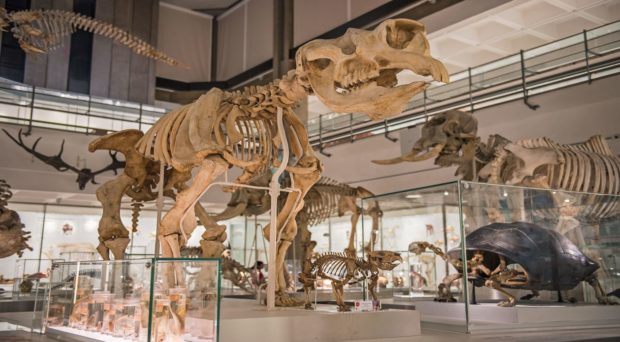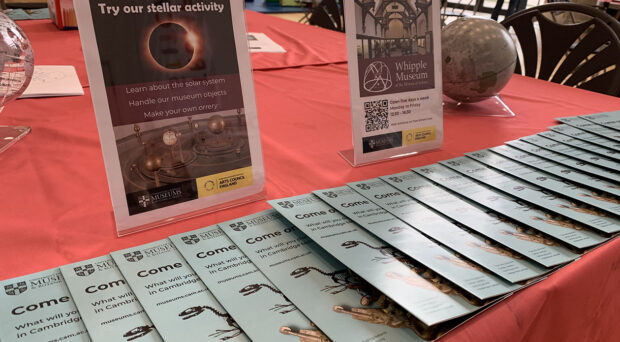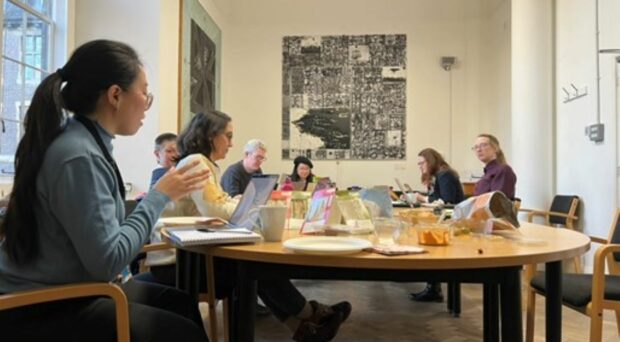One of the things I love about working with collections is how much I end up learning not just about the collection itself but also about the world. And all without needing to study! The saying: “You learn something new everyday”, really does hold true for collections work and I thought I’d share some of my fun discoveries with you.
Since mid-March or so, many of us have been working from home during the COVID lockdown, and collections staff are no different. Despite much of our work being hands-on when we are in the museum and behind-the-scenes, there is also a lot we can do remotely. One of these is to update and maintain records on our Collections Management Database, or CMS, where we store information about our collection.
I’ve been working through a backlog of object images and uploading them to the database, transcribing labels and tidying up the object records as I go. Thanks to the magic of technology and the internet, this information is then available to view online, at https://collections.maa.cam.co.uk
Here are some of the more quirky things I have come across…
Tree kangaroo? Kangaroo in trees?

I started with an intriguing photograph and a mysterious entry in the Accession Register: “Necklace of tree kangaroo teeth”. The Accession Register is our hard-copy list of objects in the Museum and is just one of the places we look for more information about our objects. Alfred Cort Haddon donated this necklace to the Museum along with many other objects. Haddon led the Cambridge Expedition to the Torres Straits in 1898, and it seems likely that the necklace would have been collected during this trip. Unfortunately, we don’t have any further information to tell us whether the teeth were symbolic or purely decorative.
I’d say most people know what a kangaroo is, right? But how many of you, hard-core Attenborough fans aside, know there is such a thing as a tree kangaroo? I certainly didn’t!

Tree kangaroos (genus Dendrolagus) are marsupials in the same family as kangaroos, wallabies and quokkas. They live in the treetops of rainforests in the north of Australia, Papua New Guinea and Indonesia. Unfortunately they are endangered due to habitat destruction and hunting.
I spoke to Jack Ashby, Manager at the Cambridge University Museum of Zoology, who pointed out that this necklace is made exclusively from the large incisors of the lower jaw. Each tree kangaroo only has two of these so this necklace represents a lot of animals!
For a quick peak at the endangered (but oh so cute!) Matschie’s Tree Kangaroo on film, check out this Great Big Storey video.
And if you want more information on tree kangaroos, this is a good place to start.
What on Earth is a cuscus?

When these tassels were first listed as part of the Museum of Archaeology and Anthropology’s (MAA) collection, they were described as: “Two tassels of cuscus fur”. They were collected from the Central Division of Papua New Guinea, possibly also by Haddon, but we’re not sure. We think they may have been worn decoratively as ear ornaments.
I don’t know about you, but I was only familiar with the edible grain couscous (or cuscus), but it generally doesn’t have fur! So I got a little curious and off I went to find out what this fur-bearing creature might look like…

A cuscus (family Phalangeridae) is a nocturnal creature mostly native to Australia and Papua New Guinea. It is a marsupial, which means that it carries its young in a pouch (think kangaroos). They live in trees and use their prehensile, fur-free tail to grasp branches and move around in the treetops. Humans hunt cuscus for their meat and fur and they are classified as threatened.
If you want to find out a bit more, take a look at this blog on the UCL skeleton of the week from March 2018.
Incidentally one of MAA’s star objects, made by artist Robert Kaigey in 2011, is affectionately known by museum staff as “Kuskus.” You might recognise him from the freestanding display in the first floor gallery at MAA. Kuskus is the name for a small reef shark in Meriam Mir, an Indigenous language spoken in the Eastern Islands of the Torres Strait.

That’s all for now
Thanks for sticking with me until the end! I hope you have enjoyed this glimpse into some of our fascinating objects and the marsupials from which their materials are sourced.
Please visit the online collections where you can find out more about the objects that we care for.







